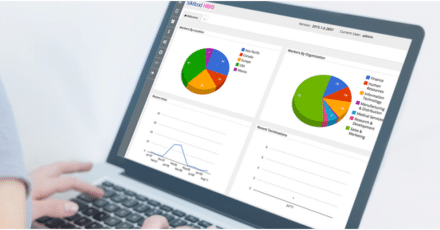Aligning #HR Technology With Your Talent Decisions
(Editor’s Note: Today’s post is brought to you by our friends at SilkRoad, a leading global provider of cloud-based talent management solutions. They have just launched a new online resource center to showcase research and analyst reports on HR technologies to help HR professionals leverage employee data in business decisions.)
Business leaders today are faced with a long list of talent decisions. Every day, they have to decide:
- Who should we hire?
- What is the best use of their talents (as a full-time, part-time or contractor)?
- Who should we include in the succession plan?
- How should we develop current employees for future opportunities?
- Are there employees we need to redesign work for?
- Are there employees ready to retire and we need them to share their knowledge?
- Do we have employees that don’t seem happy or engaged with the organization?
- Does the company have redundant or obsolete positions?
And, the list goes on. These questions aren’t just human resources questions. They happen in every department. In many cases, department managers are looking to human resources to help answer these demands. Which raises the question, how can HR help department managers make talent decisions.
There are two essential components to making talent decisions. The first is to use the right process. The second is to use the right information.
In talking about the right process, we mean making talent decisions in a fair and compliant manner. The decision should align with federal, state and local legislation. It should follow company policy. The decision needs to be fair. Please note that I didn’t say everyone needs to love the decision. Sometimes employees are disappointed when they don’t get a promotion, etc. But they can still respect the process.
The other piece to decision making is using the right information. By that I mean data that is consistent, accurate and timely. One of the most effective ways to ensure that employee data is up-to-date is by using a human resources management system (HRMS). Before we go any further, let’s define what a HRMS is and does. Not every company has an HRMS.
An HRMS is a single system that allows companies to manage employee, job and organizational data. Traditionally, the information is basic employee data used primarily for payroll and benefits purposes. HRMS can also offer scheduling, time and attendance, and absence management functions.
Many HRMS solutions are compatible with other HR-related software solutions such as applicant tracking, onboarding, performance management and learning. Even as a stand-alone system, HRMS solutions bring a tremendous value to the business. Obviously, they organize one of the biggest expenses in the operation: payroll. But an HRMS has reporting functionality so information can be utilized and analyzed to make strategic talent decisions.
For example, let’s say your organization has a new senior vice president of operations who wants to restructure the organization. An HRMS allows you to provide information about employees by job title, location, etc. to assist with the conversations about the new organizational chart.
When used with other solutions, an HRMS can provide an extra level of detail. Let’s say your company is considering opening a new location. As part of their strategic plan, they need to include a hiring strategy. With a combined HRMS and recruiting solution, information about sourcing methods and time-to-fill can be accessed to develop that plan. Otherwise, you’re looking at long hours and Excel spreadsheets.
I realize for some readers this is a no-brainer. You may have a full-suite of human resources technology. But it’s important to have these conversations because not everyone does. And not everyone who has the technology takes full advantage of its capability. I was at a meeting recently and started chatting with the vice president of human resources from a company with tens of thousands of employees. He said, “We have the best operations technology in the world. We can tell you how many seconds and the cost it takes to do something in our business. But we can’t tell you how many people work for the company.”
Think about how that limits the talent decisions being made in that organization.
So I hope you’ll join me and the folks from SilkRoad on Wednesday, April 29 when we’ll continue this conversation about aligning human resources technology and talent strategies. You can find details and registration info regarding the webinar here. Even if you can’t make it, go ahead and register so you get access to the recorded archive.
Technology provides us with the ability to effectively and efficiently collect data we need to run the business. It’s part of our role as human resources professionals to make sure our organization is aware of what HR technology brings to the party.
2